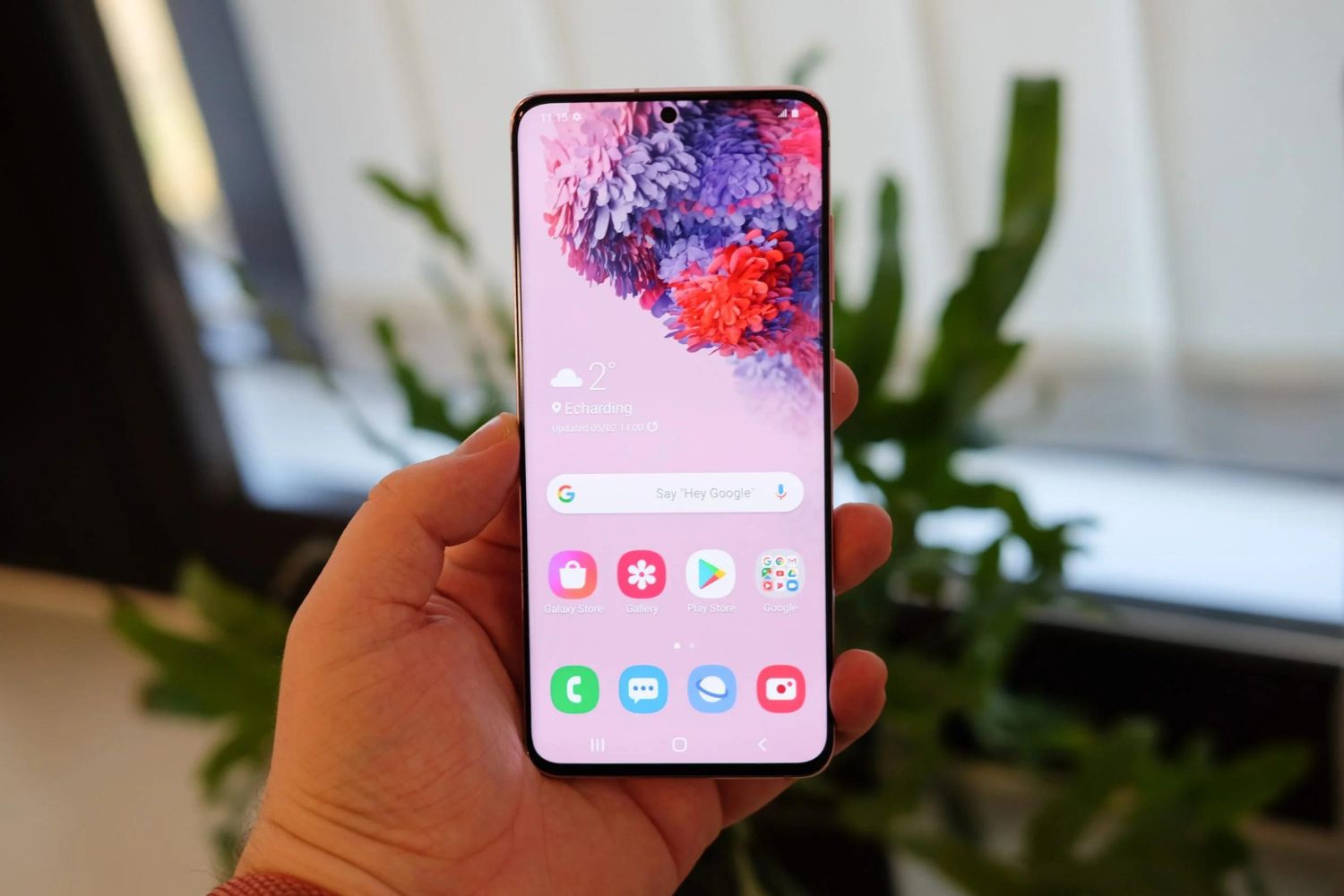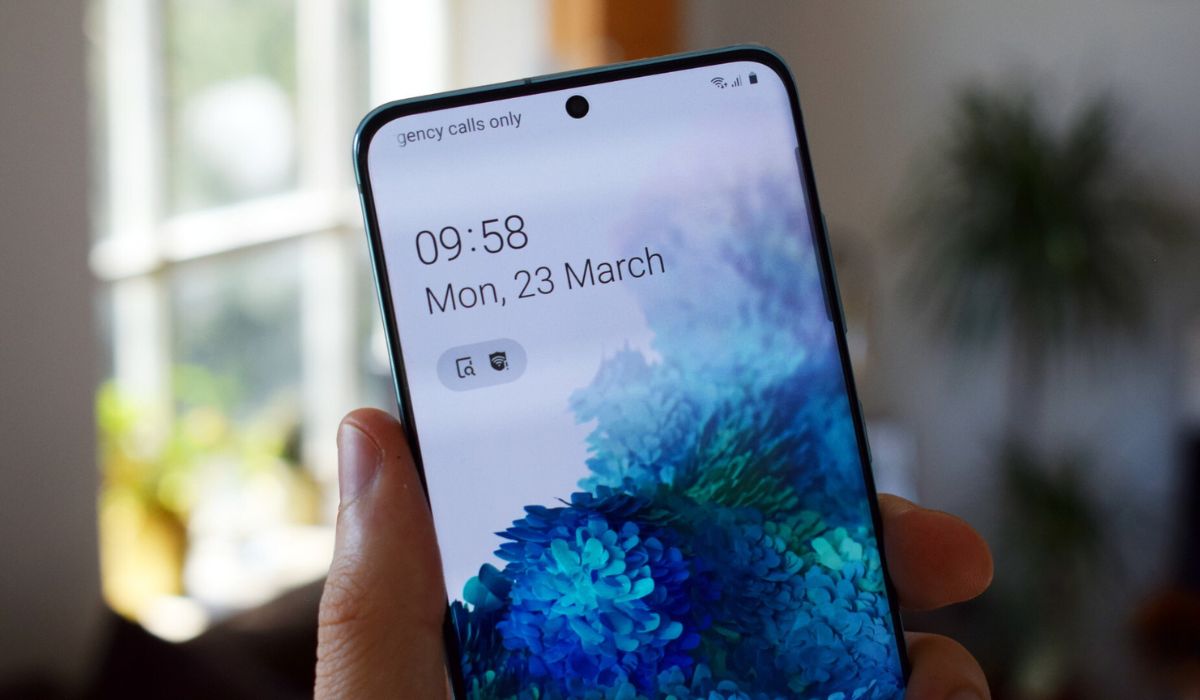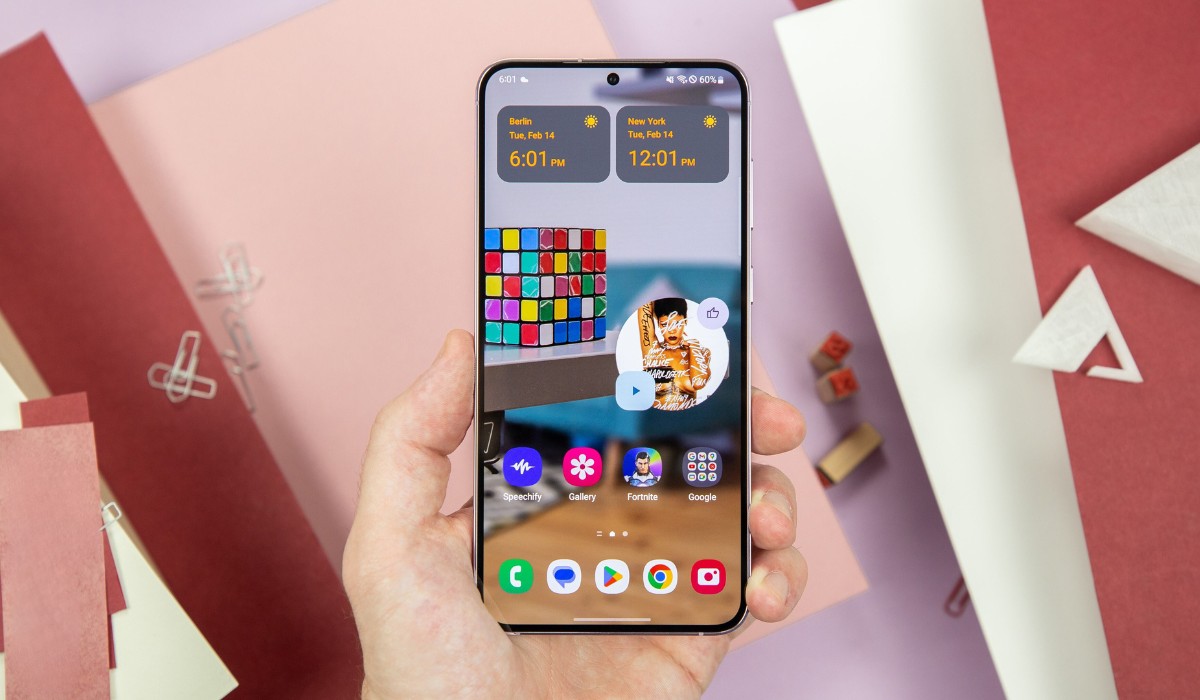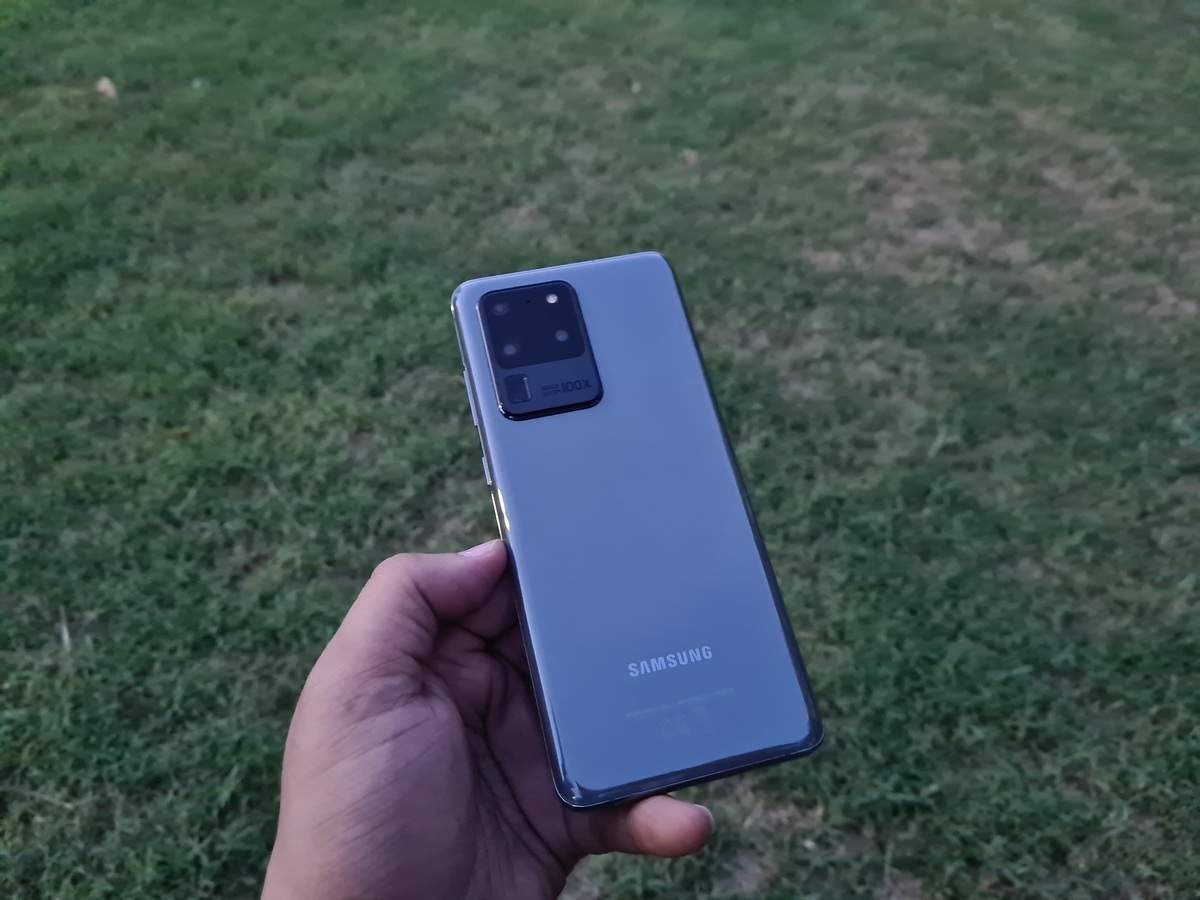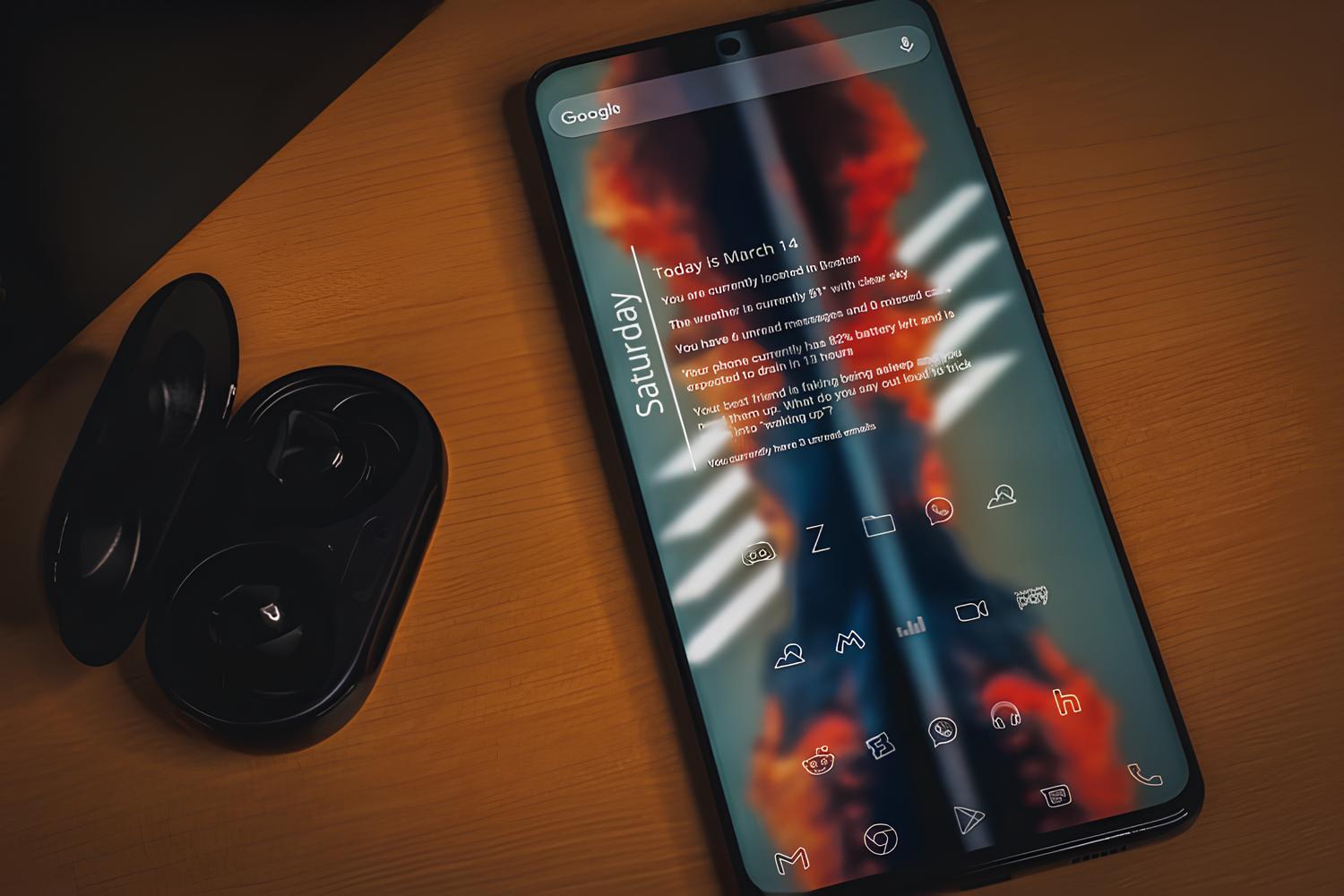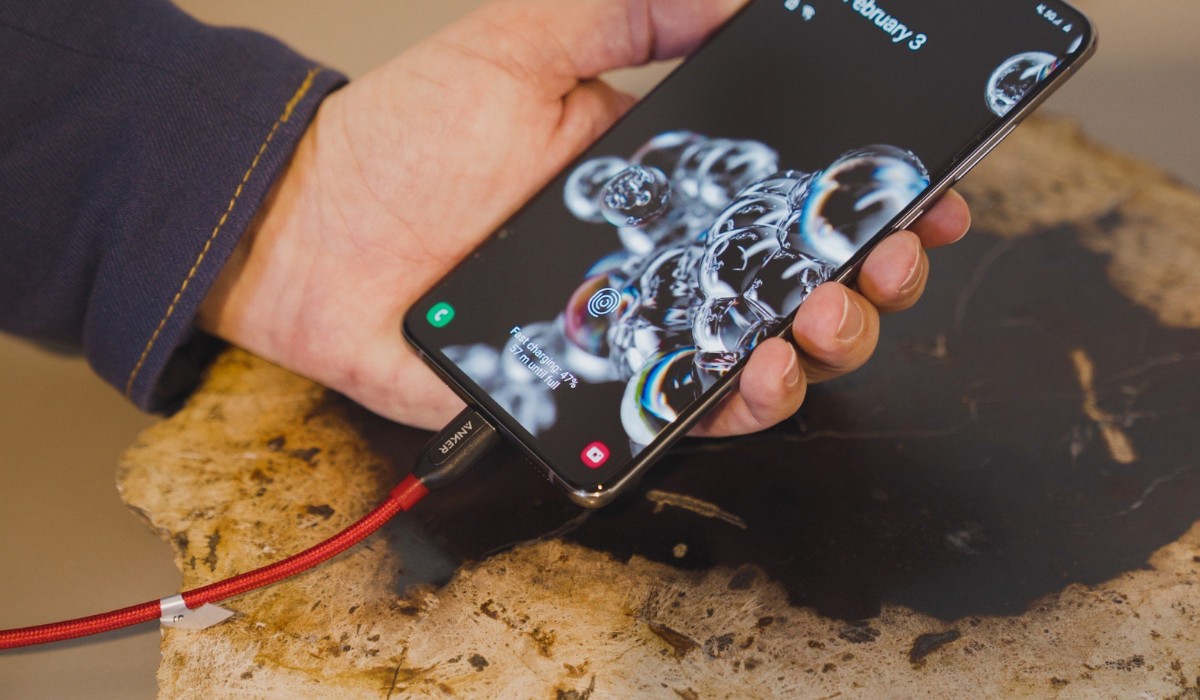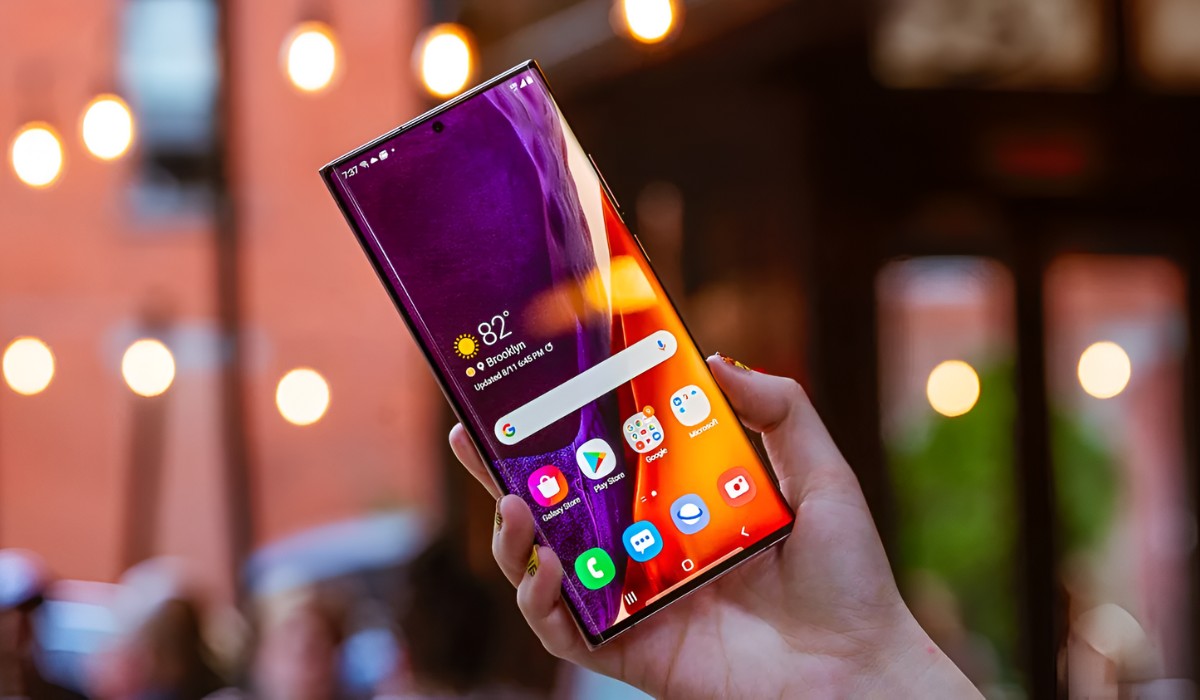Check for Rogue Apps
One of the most common culprits behind fast battery drainage on the Samsung S20 is rogue apps. These are apps that consume an excessive amount of battery power due to poor optimization, constant background activity, or other issues. Identifying and addressing these rogue apps can significantly improve your device's battery life.
To begin the process of identifying rogue apps, navigate to the "Settings" menu on your Samsung S20. From there, tap on "Device care" and then select "Battery." Here, you will find a breakdown of battery usage by various apps and services. Keep an eye out for any apps that appear to be consuming an unusually high percentage of battery power, especially those that you haven't been using extensively.
Once you've identified potential rogue apps, consider taking the following steps to address the issue:
-
Force Stop and Disable: If you notice that a particular app is draining an excessive amount of battery, you can start by force stopping it. To do this, go to "Settings," then "Apps," and select the problematic app. Tap on "Force stop" to halt its background processes temporarily. If the app continues to be problematic, you may also choose to disable it entirely.
-
Update or Uninstall: Outdated apps can sometimes be the cause of battery drain. Check the Google Play Store for updates to the app in question. If an update is available, install it to see if it resolves the battery drain issue. If the problem persists, consider uninstalling the app altogether and finding an alternative with better battery optimization.
-
Clear App Cache: Accumulated app cache can sometimes lead to increased battery consumption. Within the "Apps" section of your device's settings, select the problematic app and tap on "Storage." From there, you can clear the app's cache to potentially alleviate the battery drain.
By addressing rogue apps and optimizing their behavior, you can take a significant step toward resolving fast battery drainage on your Samsung S20. Regularly monitoring battery usage and staying proactive in managing app activity can help maintain optimal battery performance for your device.
Adjust Screen Brightness and Timeout Settings
The display of a mobile device, such as the Samsung S20, plays a pivotal role in its overall battery consumption. By adjusting the screen brightness and timeout settings, users can effectively manage power usage and extend the device's battery life.
Screen Brightness
The screen brightness level directly impacts the amount of power consumed by the display. A brighter screen requires more energy, leading to faster battery drainage. On the Samsung S20, users can easily adjust the screen brightness to strike a balance between visibility and power efficiency.
To modify the screen brightness, navigate to the "Settings" menu and select "Display." From there, tap on "Brightness" to access the brightness adjustment slider. By lowering the brightness to a comfortable yet energy-efficient level, users can immediately reduce the device's power consumption, thereby extending battery life.
Timeout Settings
In addition to adjusting brightness, managing the screen timeout settings can contribute to battery conservation. The screen timeout determines how long the display remains active when the device is not in use. By setting a shorter timeout period, users can ensure that the screen turns off promptly after a period of inactivity, conserving power in the process.
To adjust the screen timeout on the Samsung S20, navigate to "Settings," then "Display," and select "Screen timeout." Here, users can choose from a range of timeout durations, such as 15 seconds, 30 seconds, or 1 minute. Opting for a shorter timeout period can effectively reduce unnecessary power consumption when the device is idle, ultimately preserving battery life.
Adaptive Brightness
For an even more dynamic approach to managing screen brightness, the Samsung S20 offers an adaptive brightness feature. This functionality automatically adjusts the screen brightness based on ambient lighting conditions, optimizing visibility while minimizing power usage.
To enable adaptive brightness, go to "Settings," then "Display," and select "Adaptive brightness." By allowing the device to intelligently adapt its brightness levels to the surrounding environment, users can further enhance power efficiency without compromising usability.
By proactively adjusting screen brightness and timeout settings, Samsung S20 users can exert greater control over their device's power consumption, ultimately mitigating fast battery drainage and prolonging the time between charges. These simple yet impactful adjustments empower users to strike a harmonious balance between visual clarity and energy conservation, enhancing the overall mobile experience.
Disable Background Apps and Services
Background apps and services can significantly contribute to fast battery drainage on the Samsung S20. Even when not actively in use, these background processes continue to consume system resources and power, impacting the overall battery life of the device. By taking proactive measures to disable unnecessary background apps and services, users can effectively manage power consumption and optimize their device's battery performance.
Managing Background Apps
To address background app activity, users can leverage the built-in tools and settings on the Samsung S20 to gain insight into app behavior and make informed decisions regarding their impact on battery life. By following these steps, users can effectively disable or limit the activity of background apps:
-
App Permissions: Start by reviewing the permissions granted to various apps on your device. Navigate to the "Settings" menu and select "Apps." From there, choose a specific app and access its permissions. By revoking unnecessary permissions, users can restrict the app's background activity, potentially reducing its impact on battery consumption.
-
Background Activity Restrictions: Within the app settings, users can explore options to restrict background activity for specific apps. By navigating to the "Battery" section within the app settings, users may find the option to limit background activity, preventing the app from consuming excessive resources when not actively in use.
-
App Standby Management: The Samsung S20 offers advanced app standby management features that automatically optimize app activity to conserve power. Users can access these settings by navigating to "Settings," then "Device care," and selecting "Battery." From there, users can tap on "App power management" to configure app standby settings and restrict background activity for selected apps.
Disabling Unnecessary Services
In addition to managing background app activity, users can also disable unnecessary services and processes that may contribute to fast battery drainage. By identifying and addressing these services, users can exert greater control over their device's power consumption. Here are some key steps to consider:
-
Background Services: Navigate to the "Settings" menu and select "Developer options." Within this section, users can explore background process limits and adjust settings to restrict background services, preventing them from consuming excessive power.
-
System Services Management: Within the device settings, users can access the "Battery" section and tap on "More battery settings" to explore system services that may be contributing to battery drain. By selectively disabling unnecessary system services, users can mitigate power consumption and extend battery life.
By proactively managing background apps and services, Samsung S20 users can effectively mitigate fast battery drainage and optimize their device's power efficiency. These strategic measures empower users to take control of their device's resource allocation, ultimately enhancing the overall battery performance and prolonging the time between charges.
Update Software and Apps
Keeping the software and apps on your Samsung S20 up to date is crucial for maintaining optimal performance and addressing potential factors contributing to fast battery drainage. Software updates often include bug fixes, performance enhancements, and optimizations that can directly impact battery efficiency. Similarly, app updates frequently introduce improvements in resource management and power consumption, making it essential to stay current with the latest versions.
To initiate the update process for your Samsung S20, navigate to the "Settings" menu and select "Software update." Here, you can check for and install any available system updates to ensure that your device is running the latest firmware. System updates often include enhancements to power management algorithms, system resource allocation, and overall efficiency, all of which can positively influence battery life.
In addition to system updates, it's equally important to keep your apps up to date. Open the Google Play Store and tap on the menu icon in the top-left corner. From the menu, select "My apps & games" to view a list of installed apps with available updates. By selecting "Update all," you can ensure that your apps are equipped with the latest optimizations and bug fixes, potentially addressing any underlying issues contributing to fast battery drainage.
Furthermore, when updating apps, developers often include performance enhancements and battery optimization features in their release notes. By reviewing these notes, you can gain insight into the specific improvements introduced in each update, allowing you to assess the potential impact on battery efficiency.
Regularly updating the software and apps on your Samsung S20 not only enhances security and functionality but also plays a pivotal role in managing power consumption and extending battery life. By staying proactive in maintaining the latest software and app versions, users can leverage the ongoing improvements and optimizations provided by developers, ultimately contributing to a more efficient and enduring battery performance for their devices.
Use Power Saving Mode
Power Saving Mode is a valuable feature offered by the Samsung S20 that empowers users to proactively manage power consumption and extend the device's battery life. When activated, Power Saving Mode implements a series of optimizations and restrictions to minimize energy usage, allowing users to maintain essential functionality while conserving power for prolonged usage.
Upon enabling Power Saving Mode, the Samsung S20 undergoes a series of adjustments to reduce power consumption across various aspects of the device's operation. These adjustments typically include limiting background app activity, reducing screen brightness, and optimizing system performance to prioritize energy efficiency.
One of the primary functions of Power Saving Mode is to curtail background app activity, preventing unnecessary processes from consuming system resources and draining the battery. By restricting background app refresh and limiting their access to system resources, Power Saving Mode effectively mitigates excessive power usage, allowing users to maintain essential app functionality while preserving battery life.
Furthermore, Power Saving Mode often incorporates screen brightness adjustments to minimize energy consumption. By dimming the display and optimizing the screen refresh rate, the device can achieve significant power savings without compromising visibility or usability. These adjustments strike a balance between energy efficiency and user experience, ensuring that the device remains functional while conserving power for extended usage.
In addition to managing app activity and screen brightness, Power Saving Mode may also optimize system performance to prioritize essential functions and conserve energy. By adjusting CPU performance, network usage, and system notifications, the device can streamline its operation to minimize power consumption, thereby extending the overall battery life.
The flexibility of Power Saving Mode allows users to customize its activation based on their specific needs and usage scenarios. Whether conserving battery during extended periods of use or ensuring longevity during low-power situations, the feature provides users with the control and adaptability to optimize power consumption according to their preferences.
By leveraging Power Saving Mode, Samsung S20 users can effectively manage power consumption, extend battery life, and enhance the overall efficiency of their devices. Whether navigating through a busy day or preparing for extended usage without access to charging, the feature serves as a valuable tool for maintaining optimal battery performance and empowering users to make the most of their mobile experience.
Monitor Battery Usage in Settings
Monitoring battery usage in the settings of your Samsung S20 provides valuable insights into the specific apps and services that are consuming the most power, enabling you to make informed decisions to optimize battery performance. By accessing the battery usage details, you can gain a comprehensive understanding of how various components of your device impact power consumption, empowering you to take proactive measures to mitigate fast battery drainage.
To begin monitoring battery usage, navigate to the "Settings" menu on your Samsung S20 and select "Device care." From there, tap on "Battery" to access a detailed breakdown of battery usage by various apps and system services. This comprehensive overview presents a clear picture of the specific elements that are contributing to power consumption, allowing you to identify potential areas for optimization.
Within the battery usage details, you can review the percentage of battery usage attributed to each app and service, as well as the corresponding time frame over which the consumption occurred. This information is instrumental in identifying any apps or processes that exhibit unusually high power consumption, signaling potential areas for improvement.
By analyzing the battery usage data, you can prioritize your optimization efforts by focusing on the apps and services that have the most significant impact on battery life. This targeted approach enables you to address the most influential factors contributing to fast battery drainage, ultimately leading to more effective and efficient battery management.
In addition to reviewing app-specific battery usage, the battery settings on the Samsung S20 often provide additional insights and recommendations for optimizing power consumption. These recommendations may include suggestions for managing background app activity, adjusting display settings, or enabling power-saving features to enhance battery performance.
Regularly monitoring battery usage in the settings of your Samsung S20 empowers you to stay proactive in managing power consumption and optimizing battery performance. By leveraging the detailed insights provided by the battery usage breakdown, you can make informed decisions to address fast battery drainage and ensure that your device operates at its peak efficiency, ultimately enhancing the overall mobile experience.
Clear Cache Partition
Clearing the cache partition on your Samsung S20 can serve as a valuable troubleshooting step to address fast battery drainage and optimize overall device performance. The cache partition stores temporary system data and app-specific files, which, over time, can accumulate and potentially impact system efficiency and battery consumption. By clearing the cache partition, users can effectively remove outdated or unnecessary data, potentially resolving underlying issues contributing to fast battery drainage.
To initiate the process of clearing the cache partition on your Samsung S20, start by powering off the device. Once the device is powered off, you can proceed to access the recovery mode by pressing and holding specific hardware buttons, typically a combination of the volume up, power, and Bixby buttons. The exact button combination may vary based on the device model and software version, so it's essential to refer to the specific instructions for your Samsung S20 variant.
Upon successfully entering recovery mode, users can navigate the menu using the volume buttons to highlight the "Wipe cache partition" option. Once selected, confirm the action to initiate the cache partition clearing process. This process may take a few moments to complete, during which the device will remove the accumulated cache data, optimizing system performance and potentially alleviating fast battery drainage.
Clearing the cache partition does not impact personal data or settings, as it specifically targets temporary system and app data. However, it can effectively address issues related to system slowdown, app crashes, and excessive battery consumption by eliminating outdated or corrupted cache files.
After the cache partition has been cleared, users can reboot the device to resume normal operation. Following this maintenance procedure, users may observe improvements in system responsiveness, app stability, and overall battery performance. By periodically clearing the cache partition, users can maintain the optimal functionality of their Samsung S20, ensuring that the device operates at its peak efficiency and delivers a seamless and enduring mobile experience.
Incorporating the clearing of the cache partition into your device maintenance routine can serve as a proactive measure to address potential factors contributing to fast battery drainage, ultimately enhancing the overall performance and longevity of your Samsung S20.







